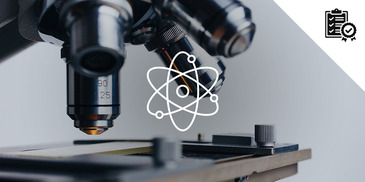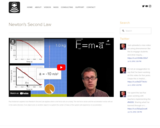
In the following video Paul Andersen explains how mass can be converted to energy and energy can be converted to mass. [3:30]
- Subject:
- Science
- Material Type:
- Audio/Video
- Provider:
- Bozeman Science
- Date Added:
- 12/01/2023


In the following video Paul Andersen explains how mass can be converted to energy and energy can be converted to mass. [3:30]

In the following video Paul Andersen explains how matter, like light, can be treated as both a particle and a wave. Louis de Broglie proposed that matter could act as a wave and described the wavelength of matter as a function of Planck's constant divided by the momentum of the particle. [3:52]

In the following video Paul Andersen compares and contrasts mechanical and electromagnetic waves. Both types of waves transfer energy through oscillations but mechanical waves requires a medium. Several examples of each type of wave are included. [4:37]

Paul Andersen explains how mining is used to extract valuable minerals from the Earth's crust. Surface and subsurface mining are used to extract ore which is then processed. A discussion of ecosystem impacts and legislation is also included. [6:51]

Mr. Andersen describes motion as the movement of an object over time. An experiment in motion is used to calculate velocity and acceleration of a tennis ball. [8:46]

Paul Andersen explains the three types of muscle found in humans: striated, smooth and cardiac muscle. He explains how actin and myosin interact to contract the sarcomere in a muscle. The sliding filament theory explains how ATP and calcium are used to contract the z disks. [5:58]

Paul Andersen describes the major mutations found in the living world. He starts with an analogy comparing the information in DNA with the information in a recipe. Changes in the DNA can result in changes to the protein, like changes in the recipe can result in changes in the food. [7:02]

Paul Andersen explains how the Earth's climate will natural change due to interactions between the Sun and Earth, volcanism, and plate tectonics. Species may go extinct leading to adaptive radiation or may move to a suitable climate. Primary and secondary succession are also discussed. [6:38]

In this video, Paul Andersen defines natural selection as differential reproductive success. He then explains how natural selection shapes organisms on our planet through variation and selection. A K-12 teaching progression is also included. [5:33]

Paul Andersen explains how natural selection is a major mechanism in evolution. The video begins with a discussion of Charles Darwin and the details of natural selection. The data of the peppered moth during the industrial revolution is used to show the process of adaptation. [10:15]

In the following video Paul Andersen explains how Newton's Second Law applies when a net force acts on a body. The net force vector and the acceleration vector will act in the same direction. If an object acts on another object in a system the center of mass of the system will experience no acceleration [8:18]

Paul Andersen explains how Newton's Third Law applies to all objects. [6:01]

Paul Andersen explains how nuclear energy is released during fission of radioactive uranium. Light water reactors, nuclear waste, and nuclear accidents are also discussed along with the future of nuclear energy. [9:06]

The following video narrated by Paul Andersen explains how object interactions can add or remove mass or energy from a system. [2:14]

Sustaining life requires substantial energy and matter inputs. The complex structural organization of organisms accommodates the capture, transformation, transport, release, and elimination of the matter and energy needed to sustain them. [6:18]

In this video Paul Andersen describes the relationship between energy and forces. When objects are directly touching electromagnetic forces can result in forces and energy exchange. When objects are not directly touching fields; gravitational, magnetic, and electric result in forces and energy and exchange. [5:29]

In the following video Paul Andersen explains how light travels in photons which can be described as both particles and waves. Einstein showed that photons can be described as particles using the photoelectric effect to show that the energy of a photon is related to the frequency and Planck's constant. [5:17]

In this video, Paul Andersen explains how the conservation of charge applies to objects in a system. When a charged object induces charge or conducts charge to a neutral object, the net total of charge will not change. [6:07]

Paul Andersen explains how diffraction can be affected by the size of the wavelength. When waves pass through an opening or move around an obstacle, a shadow region is created. The size of the shadow zone will decrease as the wavelength matches the size of the obstacle or opening. [3:55]

Award winning science teacher, Paul Andersen, explains how linear motion of an object can be measured using the center of mass in this interesting and informative video [4:46]